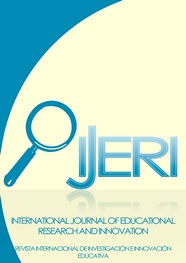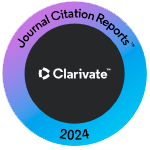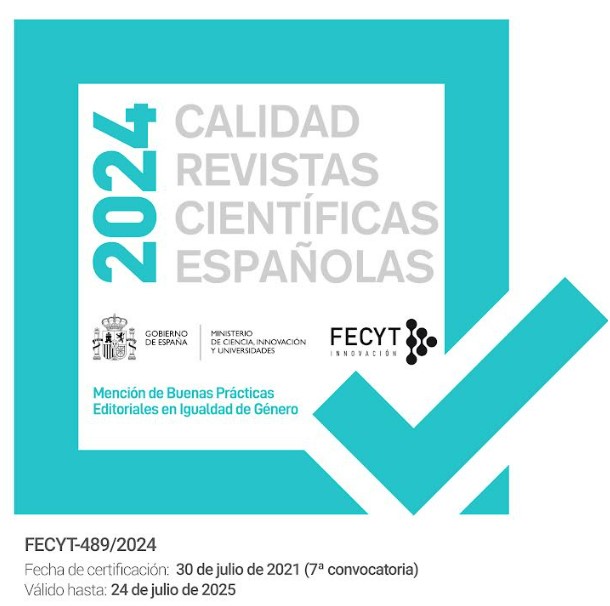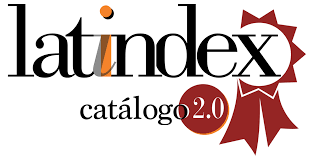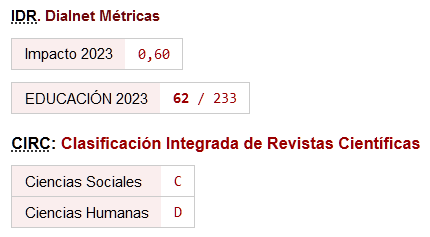Creación de una ventaja competitiva sostenible para las organizaciones a través de la implementación de la gestión del conocimiento con la ayuda de la moderna tecnología de la información
DOI:
https://doi.org/10.46661/ijeri.3838Palabras clave:
Gestión del conocimiento, ventaja competitiva sostenible, tecnología moderna de la información, modelo de ecuación estructuralResumen
Today, rapid environmental, organizational and technological changes have created a complex competitive environment for organizations. Information technology is a tool and strategy for organizations to deal with these complexities and changes. The present study Creating a sustainable competitive advantage for organizations through the implementation of knowledge management with the help of modern information technology. In fact, this study assesses the mediating role of modern information technology on the relationship between knowledge management and sustainable competitive advantage. To test the significance of the hypotheses, two critical value (CR and P) in Structural equation model was used. Based on the 5% significance level, the critical value must be greater than 1.96. According to the results, for all the research hypotheses, this value was more than 1.96 and the P value was less than 5%. It can be concluded that information technology and knowledge management have a positive and significant impact on the creation and development of a sustainable competitive advantage for organizations. It was also found that modern information technology an important mediating role on the relationship between knowledge management and sustainable competitive advantage.
Descargas
Citas
Bazrkar,A.,Iranzadeh,S.(2017).Prioritization of Lean Six Sigma Improvement Projects using Data Envelopment Analysis Cross Efficiency Model. Quality-Access to Success,Vol.18,No.157,pp.66-72.
Bhatt, G., Emdad, A., Roberts, N., & Grover, V. (2010). Building and leveraging information in dynamic environments: the role of IT infrastructure flexibility as enabler of organizational responsiveness and competitive advantage. Information & Management, 47, 341–349.
Chang, J.C,King, W.R. (2005). “Measuring the Performance of Information Systems: A Functional Scorecard”, Journal of Management Information Systems, Vol. 22, No. 1, pp. 85-115.
Christmann, P. (2000). Effects of best practices of environmental management on cost advantage: the role of complementary assets. Academy of Management Journal, 43, 663–680.
Coltman, T., Dolnicar, S., Sharma, R. (2015). Do satisfied tourists really intend to come back? Three concerns with empirical studies of the link between satisfaction and behavioral intention, Journal of Travel Research, 52, 2, 152-178.
Donate, M.J., Pablo, J.D.S., (2015). The role of knowledge-oriented leadership in knowledge management practices and innovation. J. Bus. Res. 68 (2), 360e370.
Guimaraes, J.C. F,.Severo,E.A., Vasconcelos,C.R.M.(2018). The influence of entrepreneurial, market, knowledge management orientations on cleaner production and the sustainable competitive advantage, Journal of Cleaner Production,Vol.174.pp.1653-1663, https://doi.org/10.1016/j.jclepro.2017.11.074.
Gupta,G.,Tan,K.T.,Seng Ee,Y.,Phang,C.S.(2018).Resource-Based View of Information Systems: Sustainable and Transient Competitive Advantage Perspectives, Australasian Journal of Information Systems, 22, 1-9.
Hasanali, F. (2002). Critical success factors of knowledge management. [online] ://www.providersedge.com/docs/km_articles/Critical_Success_Factors_of_KM.pdf.
Hill, C. Jones, G.R., (2010). Strategic management theory, Houghton Mifflin Company. New York.
Jabbouri,N.I,Siron,R.Zahari,Ib.Khalid,M.(2016),Impact of Information Technology Infrastructure on Innovation Performance: An Empirical Study on Private Universities In Iraq, Procedia Economics and Finance, Vol. 39, pp. 861-869, https://doi.org/10.1016/S2212-5671(16)30250-7.
Kasemsap, K. (2015). The Roles of Information Technology and Knowledge Management in Project Management Metrics, Suan Sunandha Rajabhat University, Thailand.
Leavitt, H. J, Whisler, T.L. (1958). "Management in the 1980's," Harvard Business Beview, pp. 41.
Li, J., & Kozhikode, R. K. (2008). Knowledge management and innovation strategy: the challenge for latecomers in emerging economies. Asia Pacific Journal of Management, 25, 429–450.
Lohrke,F.T, .KetchenJr,D.J.(2016). “The role of information technology systems in the performance of mergers and acquisitions”, Business Horizons,Vol.5,No.1,pp.7-12.
Malhotra, Y. (2002), “Why knowledge management systems fail? Enablers and constraints of knowledge management in human enterprises”, in Holsapple, C. (Ed.) Handbook on Knowledge Management, Springer Verlag, Heidelberg, Vol 1, pp. 577–599.
Masa’deh,R., Shannak,R., Maqableh,M., Tarhini,A.(2017) "The impact of knowledge management on job performance in higher education: The case of the University of Jordan", Journal of Enterprise Information Management, Vol. 30 Issue: 2, pp.244-262, https://doi.org/10.1108/JEIM-09-2015-0087.
Naveed Baqir, Muhammad, (2004), Strategic Knowledge Management for Futuristic Organizations.
Nielsen, B. B., & Ciabuschi, F. (2003). Siemens Share Net: knowledge management in practice. Business Strategy Review, 14, 33–40.
Nonaka, I & Takeuchi H. (1995). The Knowledge-Creating Company Oxford University Press.
Porter, M.E., (1991). Towards a dynamic theory of strategy. Strategic Manag. J. 12,95e117.
Rusly, F., Sun, P. Y., & Corner, J. L. (2014). The impact of change readiness on the knowledge sharing process for professional service firms. Journal of Knowledge Management, 18, 687–709.
Shannak, R. (2010), “Knowledge-based systems support for strategic decisions”, European Journal of Economics, Finance & Administrative Sciences, 21 (1), 7-20.
Sprinkle, T. A., & Urick, M. J. (2016). Alternatives to the movie sandwich Habit: Practical approaches to using movies to teach leadership and power. Management Teaching Review, 1(2), 105–119.
Sultan, N. (2013). Knowledge management in the age of cloud computing and Web2.0: Experiencing the power of disruptive innovations. International Journal of Information Management, 33, 160–165.
Sveiby, K-E. (1997), The New Organizational Wealth: Managing and Measuring Intangible Assets, Barrett-Koehler, San Francisco.
Tanui, P.J, Omare,D, Bitange,J.B.(2016). INTERNAL CONTROL SYSTEM FOR FINANCIAL MANAGEMENT IN THE CHURCH: A CASE OF PROTESTANT CHURCHES IN ELDORET MUNICIPALITY, KENYA, European Journal of Accounting, Auditing and Finance Research, 4 (6), 29-46.
Torres,A.I, Ferraz,S.S, Santos-Rodrigues,H. (2018) "The impact of knowledge management factors in organizational sustainable competitive advantage", Journal of Intellectual Capital, Vol. 19 Issue: 2, pp.453-472, https://doi.org/10.1108/JIC-12-2016-0143.
Tseng, S., (2014). The impact of knowledge management capabilities and supplier relationship management on corporate performance. Int. J. Prod. Econ. 154,39e47.
Turban,E, Zhou,D, Ma,J.(2004). A group decision support approach to evaluating journals,Information & Management, 42 (1), 31-44.
Yaseen, S., Dajani, D. and Hasan, Y. (2016). The impact of intellectual capital on the competitive advantage: Applied study in Jordanian telecommunication companies. Computers in Human Behavior, 62, 68-175.
Ziraba A & Okolo C. (2018). The Impact of Information Technology (IT) Policies and Strategies to Organization’s Competitive Advantage, V421249, 22-24.
Descargas
Publicado
Cómo citar
Número
Sección
Licencia
Derechos de autor 2019 IJERI: International Journal of Educational Research and Innovation

Esta obra está bajo una licencia internacional Creative Commons Atribución-NoComercial-SinDerivadas 4.0.

